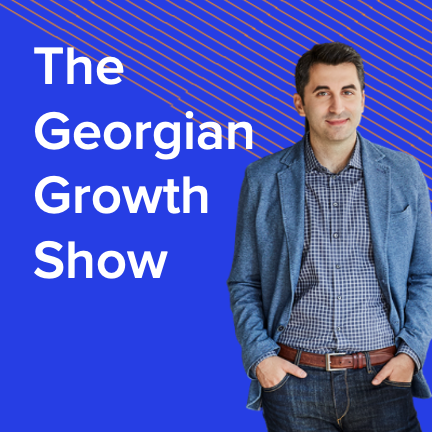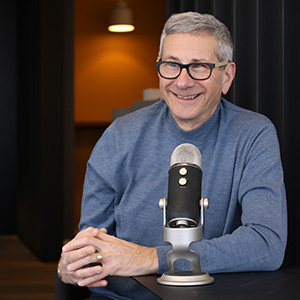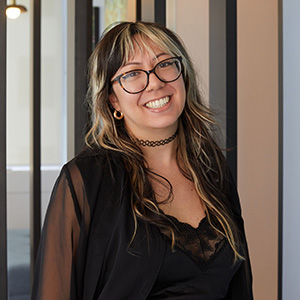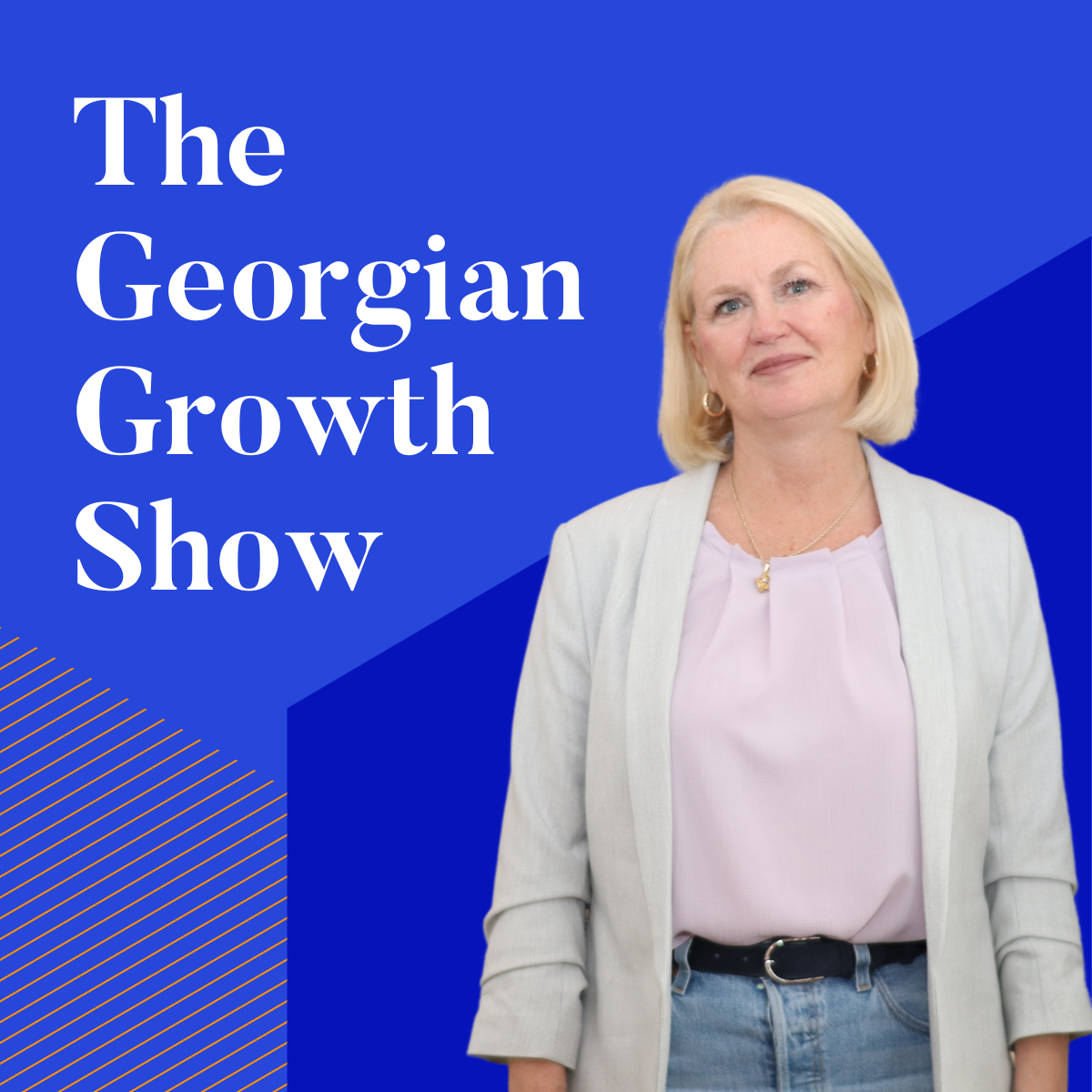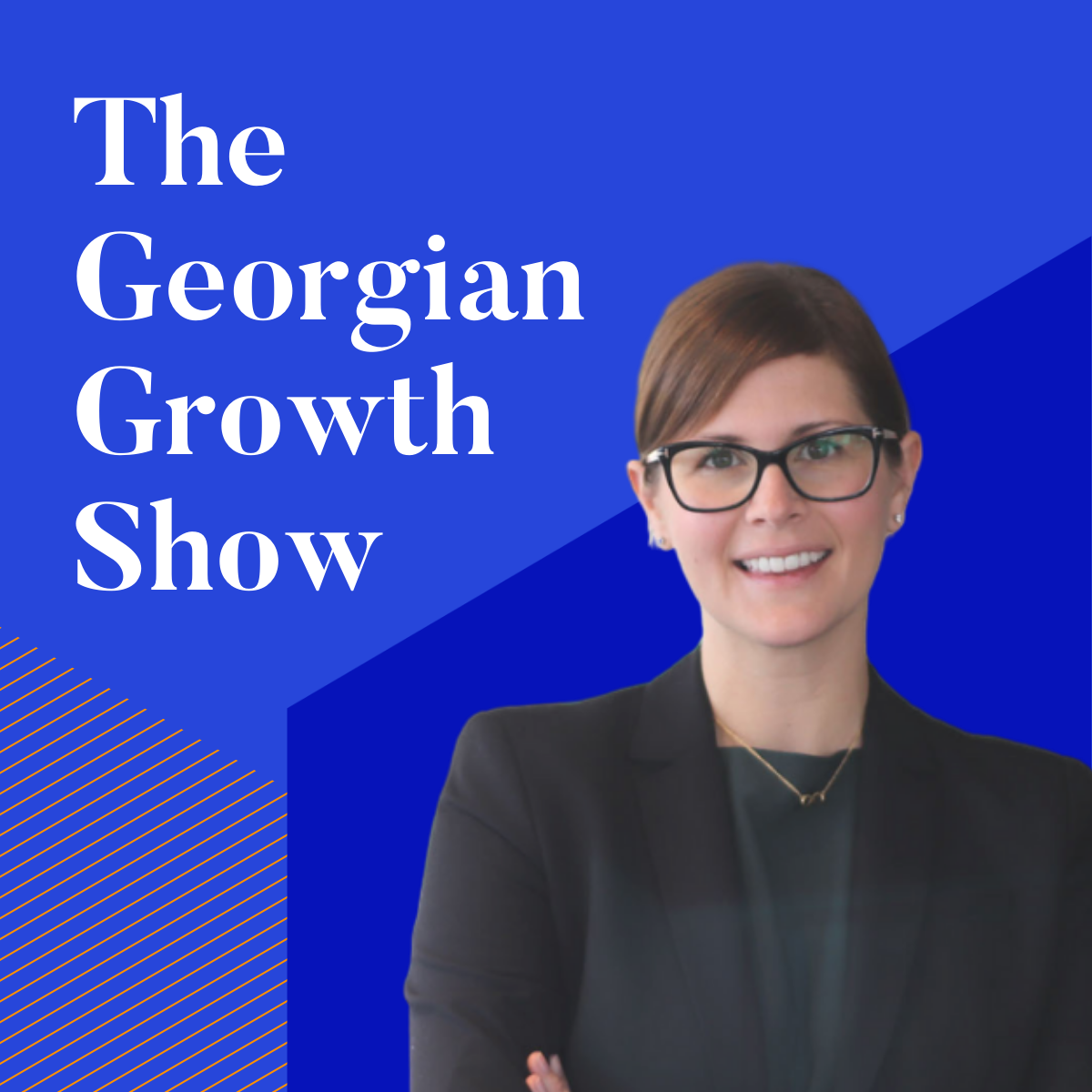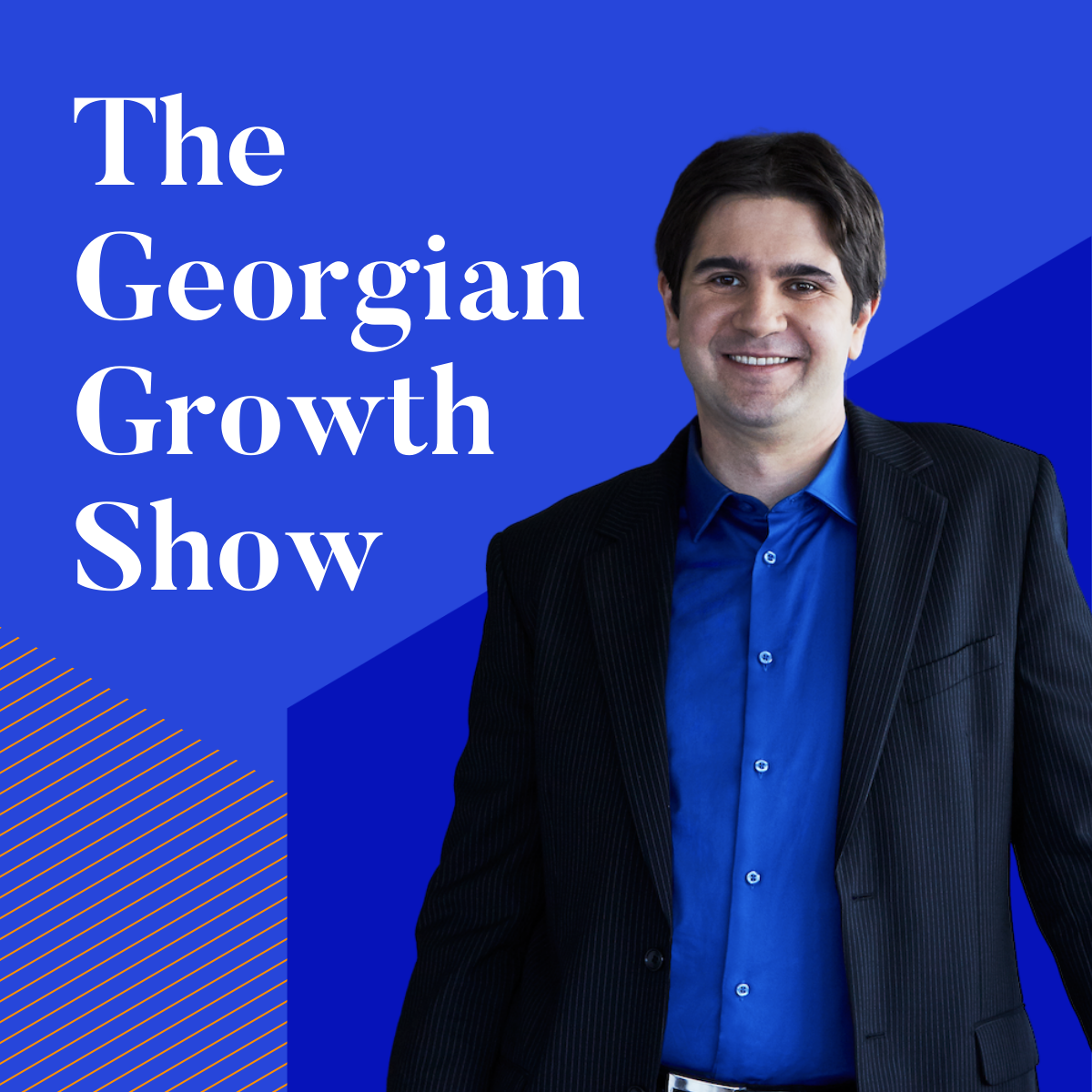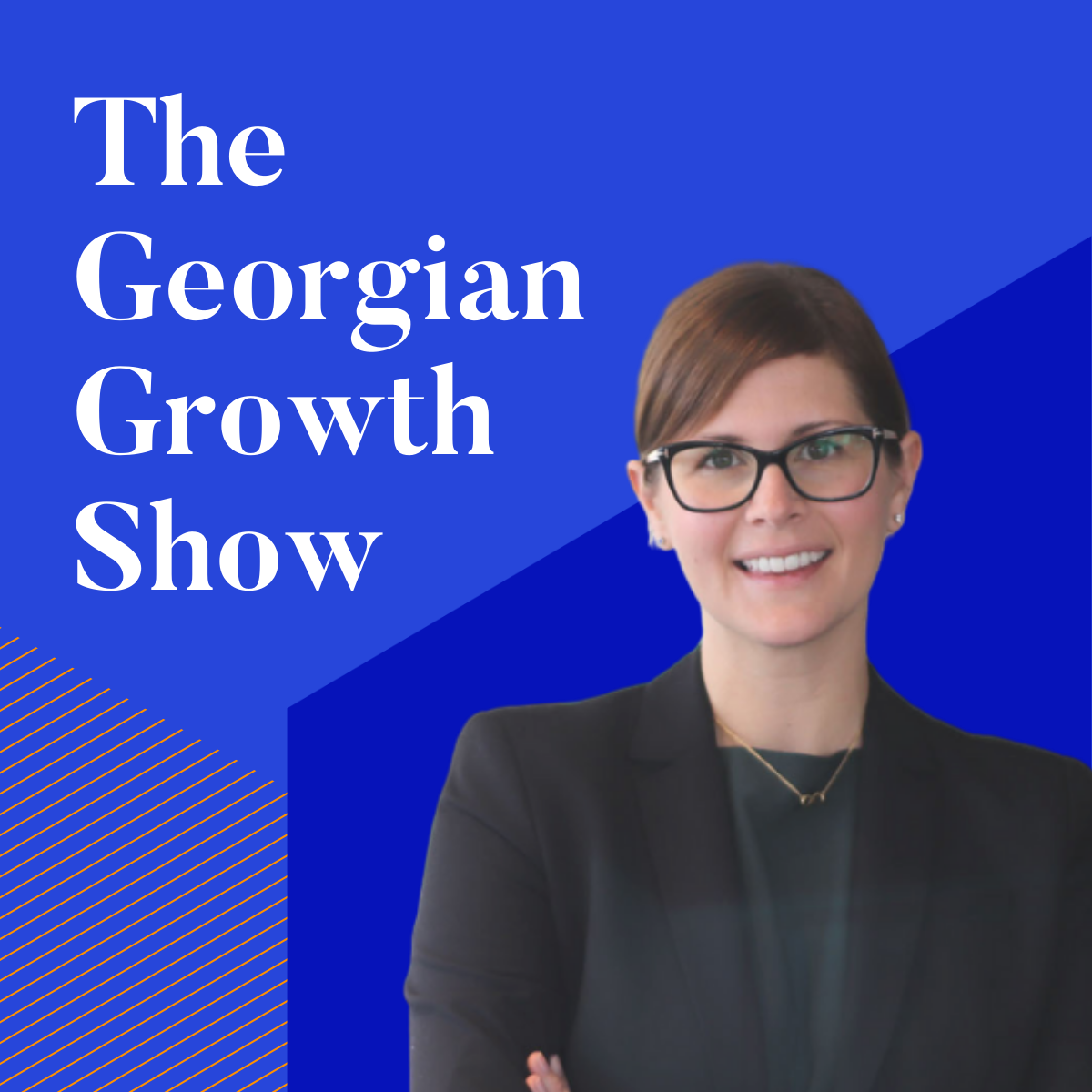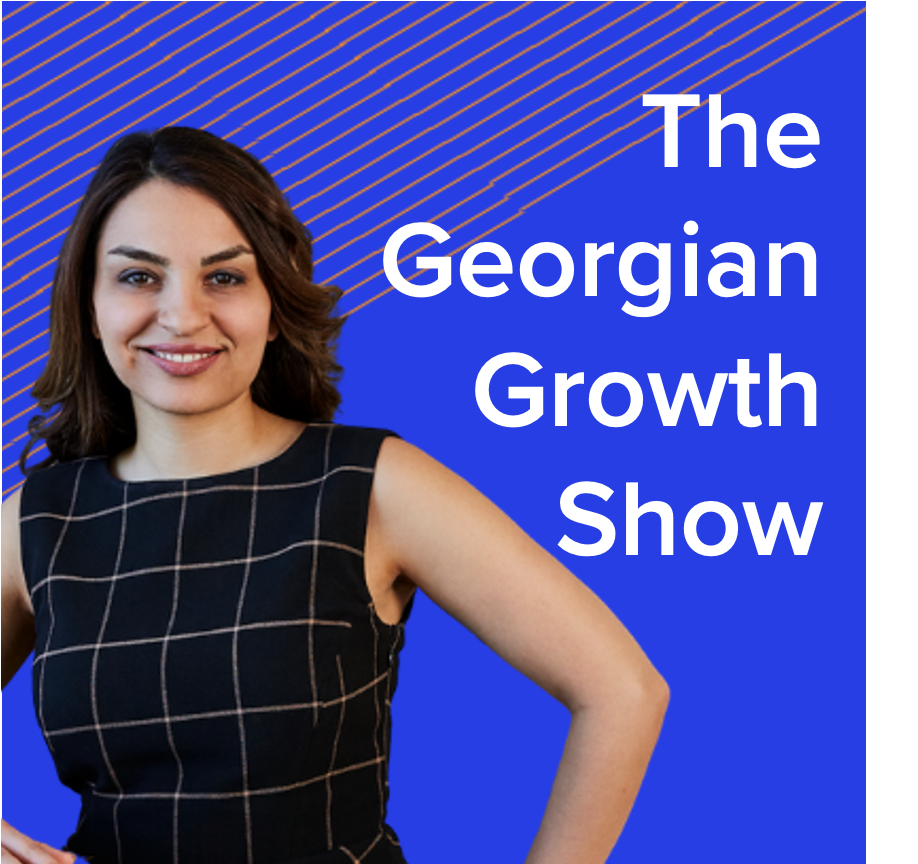Georgian's Mads Mihailescu on how Georgian Helps Companies with Technology Acceleration
- 0.5
- 1
- 1.25
- 1.5
- 1.75
- 2
Hey everyone, welcome to another Georgian top three Evan Lewis here. And today I'm joined by mads our CTO off the R&D team at Jordan. And today we're going to talk about Georgians approach to technology value-add and specifically we're going to dig into how we work with our portfolio companies on technology acceleration. So welcome mads. You lead our R&D team. Can you give us a little bit of a background on you and what your role entails at, Georgia?
Thanks for having me on your show Evan. Yeah, I'm happy to give you a little background and the role of the R&D team is a Georgia. So I come from an academic background that in my home Church studies at University of Toronto. I got a PhD in computer science with a focus Industries systems and and let's spend some time in an industrial research lab working for a company called net up them up your plate data storage data management provider and then of the Advanced Technology Group whose mandate was to look at Trends technology Trends research Trends off with impact the product lines and business units that the company and the mixture of the advanced technology proposed to identify those Trends and then incorporate them into the busy in the product lines. So the couple of years in that up and join George and parties over six years ago when we were about ten twelve people and the model that we had a dead.
Met up with the Advanced Technology Group and high level is quite quite similar to the model. We follow on our R&D team. So we believe that it's in our company's best interests for us to identify Trends disruptive Trends market trends technology Trends research Trends identified them as early as possible and then develop expertise develop a capacity internally a Georgian and then supporting our companies with therapist salary deduction of the respective Trends. Now the word trend is off the abstract. If you were to take an area like like artificial intelligence as a massive Trend that has been impacting business software companies, like it's over all over all over the past five years. That's a trend that we identified low five years ago is something that could potentially have a massive impact on on businesses and we sales five years ago. Yep.
Wrapping up our our expertise and knowledge in in apply the I doing a lot of work with companies to help to help support them on on on their adoption of of of the trim package launch new products create generate more Revenue create more differentiation higher strategic value. So that's the model. We we followed at a high level on on our R&D team identifying those those Trends and then then work with companies to help them with all the trends.
Perfect. And yeah, I'm excited to dig a little bit deeper into the top three in a bit which is you know, just around sort of how we think about structuring different engagements with our companies. But before we dig into that way, I'd love to just started paint the picture of how we think about structuring the R&D team at Georgia and you know, it's obviously pretty unconventional for a company that invests like we do need to have such a robust in-house Engineering Group and applied research group. So maybe if you can just sort of talk about the different components of that and and maybe how it's evolved over time. Sure, the current stage of the theory the structure that is quite similar to how our companies are indeed teams are structured. So on the thing you're going to find product strategy prognose, you're going to find research scientists very heavily applied. So not really doing fundamental research at Georgian. We believe in applied research. We believe our purpose should be to do apply research for the Bears.
Support company and then Engineers have Engineers on on the team. We also have a security officer sort of security people on the team that support not only the Georgian business from a security perspective. Also Drive the adoption what people are trust is this area into our our portfolio companies. So by and large what the structure you see in every technology firm on the early side, you'll see a Georgian I think maybe the the distinction I would make is that heavy emphasis on the R&D team doing applied research work and I'm not buying identifying those Trends to support our companies when they want to invest in the adoption of the respective Trend. So in a way we are kind of the risk their investment in in those trends
So let's maybe dig into the top three now. So again, we're talking about top three ways. We work with our portfolio companies on Tech acceleration. The first one we're going to dig into is around home team building and advisory services. So obviously everything starts with team and talent and making sure that before you build the technology you have the right folks in place. So I thought maybe if you could just talk a little bit about some of the engagements we do on that side of things to make sure that our companies are appropriately staffed through then execute on these different engagements that we're working on them with them.
Whenever we engage with the portfolio company, we try to understand the level of maturity or company has Northeast areas as I mentioned before so if you take something like apply day off, which is a very broad Trend we roughly bucket companies into three levels of maturity companies that are exploring apply their eyes. So they have some some lived at home in my own a complex business process and complex workflow and there is Vision lot cuz we like to say meaning the the CEO and the leadership team the founders believe there's a lot of value to be created by embedding some form of a male into product. Those are accompanied exploratory bucket. Those countries don't have a team yet. So we'll help them kind of build the team though the companies in the office in the second bucket. We call it a building bucket. They may have deployed the machine animal production and they're looking at scaling that capacity and then companies in the advanced Market that had dead.
Is a number of machine learning loss production apparently the eyesight. So that's not what we think about our customers. Our preferred companies the companies be engaged in when we try to understand. What is the best way to support the the respective companies. So going back to the exploratory bucket. That's where we do a lot of product strategy work to First help identify or the. Product opportunities. The company should go after that might might benefit from machine learning with you as a technology. So we never start with. Hey, let's sprinkle some machine learning over your product and everything should be great Focus for a lot on trying to help our companies identify be interesting product opportunities. They can take to Market. So the companies exploratory bucket. We we have a Playbook. We follow that starts with an approximate your Workshop. The output of that Workshop would be a couple of opportunities that end the product in with the company would validate with customers with our support. They select one with the intent of dead.
Making. Kind of capability to Market powered by some form of learning in the next six months. So to help the company building muscle in the process hire a senior engineer, make sure the product management function understands what it takes to design and build ml into product and and then we go to market engine. So ensuring kind of sales enablement package marketing and any low pricing and then just to kind of finish on these values in hiring we get overtime templates roles within your AI teams and we have a song Best Practices. We recommend or companies follow when they assess people who offer our time to help us candidates on on the short list. So we do whatever it takes to help our companies take that product to Market in a slot as planned at the beginning of of the partnership and then companies in the building pocket the discussions were having their and their support or offering there is is mainly about both killing their birth.
The paucity that they mean maybe uplifting their current machine learning and data infrastructure. So we may do some advisory work in the area of data management overall, but specifically to support many miles and kind of the whole area of operations or envelopes as it's all these days we met again have the companies to kill the data science team. If they need to hire more people off data science team and then with companies that are in the building stage. We we start running what we call R&D projects with companies and those projects take two forms run car a lot of sacrifices. Our company is very focused on a I very focused on on machine learning and we run them with both companies in the building stage and the advanced stage the air hackathons. We're out of the building stage follow more kind of traditional. Ml approaches companies the advanced stage that's really do a lot of Applied research work. So we may look at areas like transfer learning or NLP representation learning off.
Engaging with companies in the advanced advanced pocket. So I mentioned we we run two types of R&D projects with our company's the one type is these are hackathons that can take anywhere from two to five days off with a locate a good chunk of our in detail towards those type of songs. We expect companies allocate resources from their side and they're very intense very collaborative and and they're greyed our hours in La Crosse our company's of them as well. But they're a great way to make progress fast or any ML and the light among the program app. And then for more applied research kind of long engagements are the second way in which we engage our company's we try to time box those projects to 4 months 1 month of disability and three months of execution of the project took nearly to make sure we keep the momentum going for a medium period of time and we deliver value. So we we always kind of put our value hat on when we embark on these engagements off.
We we still quite a bit of time before we get going on or for my project to put to understand the potential value of the work and we follow similar principles two hackathons. Like we would allocate resources we expect our resources and and then they're very collaborative. Now. We are not a Consulting for yourselves as partners food or companies. We don't nickel and dime over Consulting fees. We believe in the lining of the first and then committing resources on both sides and then working as closely as possible on the respective initiatives. Now that that's awesome. I think that paints a picture really, well. I always sort of talk about we sort of deploy a SWAT team of experts. It's very customized based on our skill-sets internally and and the needs of the customer akr portfolio company. We're sort of Designing this engagement and build a business case in a software business you build a business case for a partnership. We're doing the same thing with our customers in the portfolio. So, can you maybe just help the audience understand a little bit who are the key.
That we typically work with I would assume CTL VP product. But who are sort of the the key folks that the R&D team works with and what does that mean a working relationship look like I would say every person touches product within our companies plays a role. When we embark on these engagements given that we need to focus on engagements that have strategic value. So they're all about incorporating massive trans like apply the ankle product and figuring out how to augment end-user workflows how to automate workflows how to create a de Armond how to take advantage of that data amount to deliver the capabilities those products to end to end up having strategic value and we want to be seen by in for the key stakeholders within our company started with the CEO. So the CEO plays a key role or a common management team on our side is is in charge of managing that relationship with the CEO and wage.
We getting alignment with with the CEO and then product is a big stakeholder for us. We spent quite a bit of time talking to to product in whenever we embark on an engagement. We want understood. The production if we end up delivering the respective or in the work that may require understanding Integrations understanding user experience. So those are typically discussions that we have a product. It's within our portfolio companies if the company already has any team in place and then a lot of the discussions are taking place with the 18 to scope the respective engagement off to understand what data we have available. So more more of the technical details are worked out with the team and they're also sometimes with the team that's that's in charge of deploying models to production Imaging Solutions to production and maintaining them. Sometimes is the research team within our companies. Basically, we have a single a team in charge of researching and and and deploying models production and and maintaining them wage.
Something we favor it's other cases you may have a research into those of research and energy in that takes over. So truly understanding, how companies operate and adapting to how companies operation is something we spend a lot of time on those are really the the key stakeholders, but I want to put emphasis on the CEO because that visual log that I mentioned here the beginning starts with the CEO off makes total sense. So we talked about the team building and the advisory we've talked about workshops and hackathons as to sort of key features in our R&D and Technology. You add let's talk about the third one being software tool kit because when I was interviewing a Georgian, this was one of the ones that really stuck out to me something that is so differentiated and as the ability to scale in a massive way and really touch lots of our portfolio companies and help them solve really impactful problems. So I loved you know, just dig a little bit into a few examples
Those of different pieces of software and toolkits that we built for, you know, our companies in the past and where you see the software toolkit Vision going at Georgia. Yeah. So Thursday, we do more and more of these engagements. I think what one thing we've noticed is the there are reusable components. We can expose to the entire portfolio and those components are typically tools their tools that fit under what you'd call our ml infrastructure there. So an example would be a tool that helps data science team training Mission animals Faster by automating the way some of the data management data cleaning tasks. That's a tool. We've been developing for about six months and you know available to our portfolio companies basically foreshadow getting the area of Auto an automatic Machinery so we can part of kind of devil infrastructure fabric but really helping all our our teams or companies years.
Prototype machine learning all those faster and taking them to Market faster. Concept. We offer you his abilities is quite important. We often look for within every engagement ring look for opportunities to extract some of the R&D into a generic tool that can be done offered to our company's. We we typically expose the tool under ineffectual to license, Everything is open source within the portfolio. We don't think we should be owning any of those tools. We do leverage a lot of Open Source ourselves. So and Tooling in general and there's there's a lot of options out there, but fortunately for us to develop something that our preferred a company's competitive from we take an opportunity. So why not foreshadow that's another email to a couple of years ago. We developed a tool in the area of privacy issue. We we later integrated into tensorflow. So it's not part of the Things Are full privacy module this year. We also developed a tool we called alchemy that is mental.
Help our companies train Machinery models for not structured data much faster by leveraging research done on pre-trained models and Page the area of active learning. They just meant to basically reduce the number of labels for people in machine learning spaces number of labels required to train or train a machine learning model. So that's the same vision overall one layer above we have the application layer and that's something we've been talking more and more about recently in terms of Georgian. Perhaps developing some applications that can benefit from primarily when it comes to operational areas Operational Support. So historically a Georgian we've been developing an application $2,000 sourcing let's put our our findings of companies or potential investment opportunities. So that application release is a lead story application. So think of database of forty thousand companies wage
North America that are being scored by our application our engine on a monthly basis and those leads are the top leads are being exposed for for business development and investment teams for them too long to pursue that's an application developed for George and internally, but we also started thinking about what if we were to expose some of that functionality to our portfolio content all our companies need support when it comes to the prioritizing which leads they need to go after or even generate a new leads. They may need to go after and we have a quite a rich database of private software company data, we can extend the depending on what other companies needs are a lot of companies Universal prospects looks like so that those discussions are happening today. They're very much aligned with how we see ourselves and George is offering a platform for growth or portfolio companies who mix of services tools and applications. Another application will be developing this year again and starting internally birth.
Application to classify markets you call it our market economy initiative project starting started because if you look at all the private companies databases out there like page book that are marked off face and all the others. They don't do a great job at at classifying markets or basically mapping companies to to Market and submarkets. So it is a gap is the kind of foundational element to a lot of the work. We do a job market research and kind of one understanding which companies are are are the best prospects within within certain markets that market taxonomy again, it could be package is an application and exposed to portfolio companies as an example. So imagine a company getting a very rich view of their Market ecosystem updated periodically maybe able to bury landscape plants maybe potential lemonade targets. That's something we've been discussing Georgia in the more and more and the focus on the application layer. So the tool kit is still they're going to still be developing tools off.
now bring the level higher and developing their own applications that our portfolio companies can can benefit from
That's really helpful. Imagine. I think from my perspective. Definitely one of the most exciting parts of the work we're doing at Georgian and I personally have benefited from a lot of the the lead scoring and the techs on me work and can't wait to see where she goes. So thanks for joining that top three on Georgia and R&D team with mats. And so you guys next time.
DESCRIPTION
In this episode, Georgian's CTO shares how Georgian helps companies with technology acceleration. He answers:
- Why does Georgian have an R&D team and how's it structured?
- How do we collaborate with companies on R&D? What kind of engagements do we typically see?
- Who do we work closely with on our companies' teams?
- What software and toolkits have we built and what's the vision going forward?
